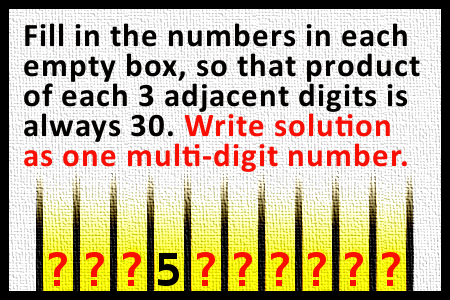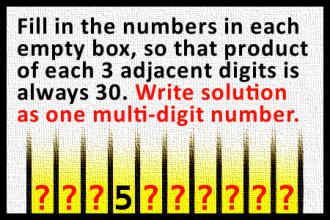Fill in the numbers in each empty box, so that product of each 3 adjacent digits is always 30
Fill in the numbers in each empty box, so that product of each 3 adjacent digits is always 30. Write solution as one multi-digit number.Correct answers: 64
The first user who solved this task is Djordje Timotijevic.
#brainteasers #math


